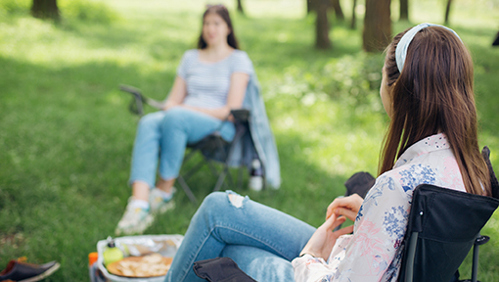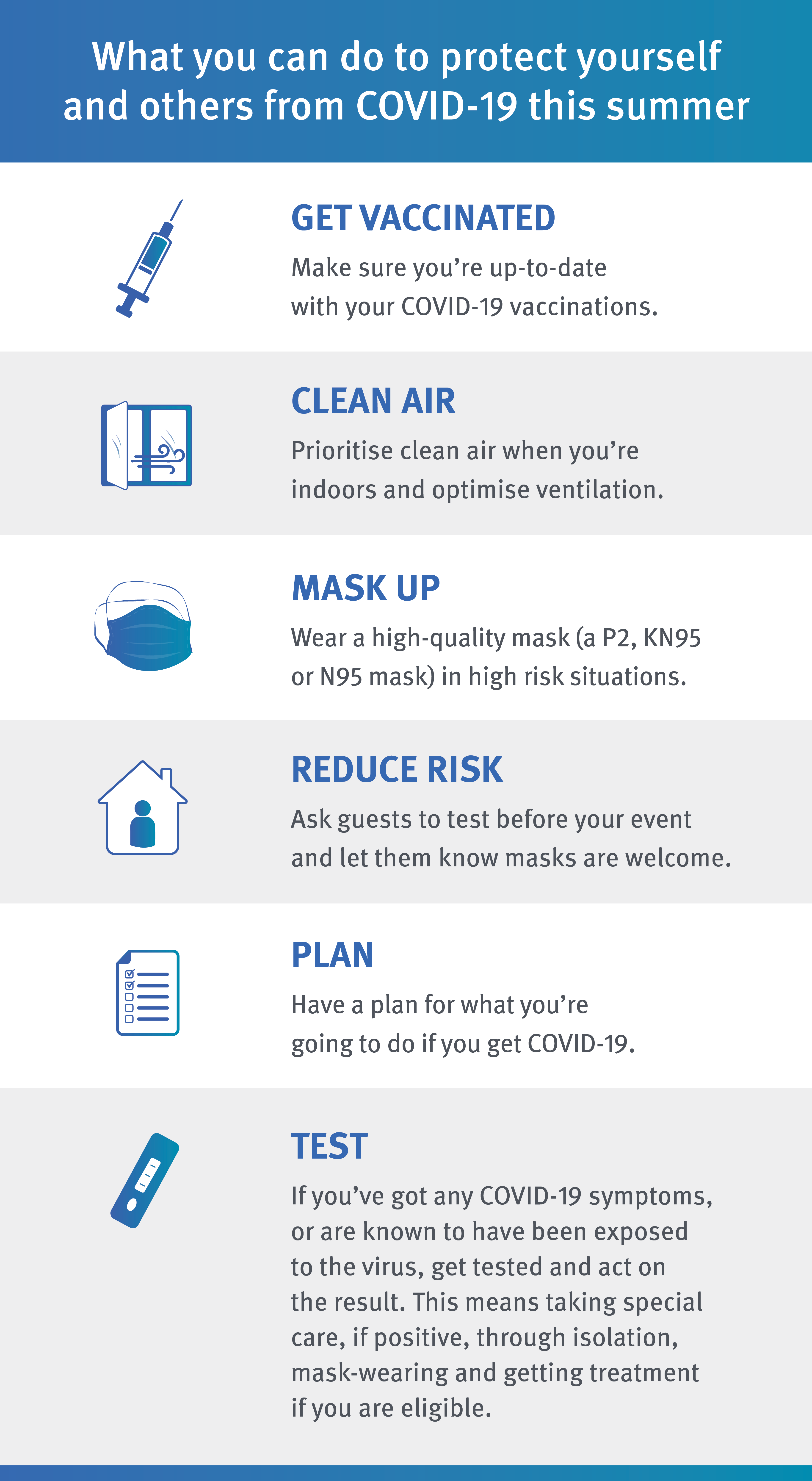
Know your COVID risk, and help yourself and others this summer

Better understand your risk of contracting COVID-19 this summer, and what you can do to keep yourself, your family, your friends and your community safe.
As we head towards the end of 2022, we’re also experiencing our fourth wave of COVID-19 for the year.
“Whilst we are likely coming off the peak of the wave, there is a lot of uncertainty around what’s going to happen next,” said Associate Professor Suman Majumdar, Burnet’s Deputy Program Director for Health Security and Pandemic Preparedness.
This is a highly unstable and dynamic virus, he said, that due to high levels of transmission, continues to mutate, with more and more variants emerging that can escape immunity.
Convergent evolution chart UPDATE 12/15. New entries: CV.2, CH.3.1, BE.10, CN.2 and the XBK recombinant (BA.2.3.20xCJ.1) @EricTopol @TRyanGregory @PeterHotez @DrEricDing @SolidEvidence @ewencallaway @kakape @siamosolocani @CorneliusRoemer @LongDesertTrain pic.twitter.com/cLkDN1j8yV
— Daniele Focosi, MD PhD MSc (@dfocosi) December 15, 2022
But unlike the pattern we’ve gotten used to of one variant being essentially replaced by the next, prepare for the future of SARS-CoV-2 to be a lot messier with multiple variants coexisting.
“We were predicting with the previous pattern we’d see waves every three to four months due to immune escape and some cross-protection from recent infection,” Associate Professor Majumdar said.
Unfortunately that might actually be sooner due to the evolution of variants and if the experience of countries like France, Italy and Denmark is anything to go by – they’re having their next wave less than two months after their last.
“Further, whilst we’re seeing waves with peaks, we’re not really seeing troughs or low levels of the virus, rather we’re seeing sustained and high impacts,” Associate Professor Majumdar said.
“Despite the introduction of treatments, vaccine boosters and immunity from infection, 2022 has been the worst year of the pandemic in terms of the direct impacts – the numbers of people who have died, who have gotten sick and gone to hospital, people with long COVID and sustained pressure on the health system.”

What you can do to protect yourself and others
1. Make sure you’re up-to-date with your COVID-19 vaccinations.
This includes your third dose and if you’re eligible, your fourth or booster dose of a COVID-19 vaccination.
Australia’s Therapeutic Goods Administration has approved two bivalent COVID-19 vaccines from Moderna and Pfizer respectively, for use as boosters in adults, which target the spike protein of the original COVID-19 strain and the spike protein of Omicron BA.1 and hence give superior protection against the newer variants.
If you’ve recently had a COVID-19 infection it’s recommended you wait three months before getting your next vaccine booster. People with immunocompromising conditions should seek medical advice tailored to their specific circumstances.
2. Prioritise safer air when you’re indoors and optimise ventilation.
COVID-19 spreads in the air, so you’re at a higher risk of getting infected when you’re in a poorly ventilated space or in a crowded location.
If you understand your risk, you can then do something about it (and encourage others to do the same).
You can ventilate the room by opening doors and windows. You can filter the air by using an air purifier or HEPA filter. Or you can even leave the room if you decide the risk to remain is too high.
3. Wear a high-quality mask (a P2, KN95 or N95 mask or respirator) in high risk situations.
You can also wear a high-quality mask in settings where you or others may be at a higher risk of getting COVID-19. Masks work two ways – they also reduce the chances of you passing on respiratory infections to others.
Masks are effective but consider them your last line of defence, so you want to do the other things on this list – like ventilation and filtering the air – first.
4. Ask people to take a test before attending your event and let them know that they’re welcome to wear a mask.
It’s a festive time of year when we’re more likely to be catching up with friends and family, so think about how you can reduce the risk not only for yourself but also for more vulnerable people who may be attending your event.
For example, you might ensure that elderly grandparents, or people with other medical conditions, have somewhere comfortable to sit outside.
You can also ask people to take a rapid antigen test or RAT before attending, and let them know that masks are welcome if they want to wear one. This is important because the strongest predictor of someone not wearing a mask is other people around them not wearing masks.
If you’re visiting someone who’s more vulnerable, test before you go and see them, and make sure you’re not symptomatic.
5. Have a plan for what you’re going to do if you get COVID-19.
For example, where are you going to isolate and are you eligible for COVID-19 treatments?
The Victorian Government has a COVID-19 medicine eligibility checker you can use as a guide.
And understand that having COVID-19 multiple times increases your risk of post-COVID complications.
6. If you’ve got any COVID-19 symptoms get tested.
At home, a RAT is your most accessible way of testing.
If you’re at risk of severe COVID-19, eligible for treatments and your RAT is negative, you should get a PCR test to confirm if you have COVID-19 or not, as COVID-19 medicines need to be used within the first five days of symptoms appearing.
If your RAT is negative but you’ve got symptoms you should isolate. You can then retest over the following days as taking a RAT multiple times improves its performance.
“Ultimately, we make our own judgements when it comes to what level of COVID risk we’re comfortable with for us and our loved ones, and normalise having these conversations about risk. We have a collective responsibility to take simple, non-restrictive measures to protect each other,” Associate Professor Majumdar said.



